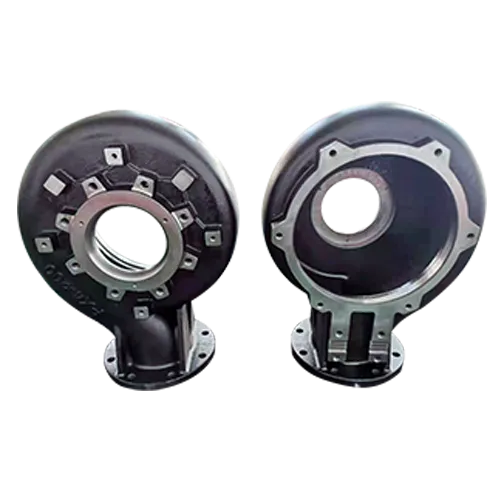Mobile:+86-311-808-126-83
Email:info@ydcastings.com
valve end cap
Exploring the Valve End Cap Functionality and Applications
In various plumbing, industrial, and mechanical applications, the valve end cap plays a critical role in maintaining the integrity and efficiency of piping systems. This seemingly simple component serves several important functions, making it a vital part of many industries, including oil and gas, water treatment, and more.
A valve end cap is essentially designed to seal off the end of a pipe or valve. Its primary purpose is to prevent the flow of fluids—be it gas, liquid, or steam—once a system has been tested or is not in use. This capability is crucial in both maintenance and operational scenarios as it ensures that the system remains airtight and leak-free, thereby protecting the environment and enhancing safety.
One of the key features of a valve end cap is its versatility
. These caps are available in various sizes, materials, and designs to accommodate different types of valves and piping systems. Common materials include stainless steel, brass, and plastic, each offering specific advantages. For instance, stainless steel caps are known for their durability and resistance to corrosion, making them ideal for harsh environments. On the other hand, plastic caps might be preferred in applications where weight reduction and lower cost are crucial.valve end cap

The applications of valve end caps extend beyond just sealing pipes. They also play an essential role in testing and maintenance procedures. During system installation, these caps can be used to create a closed-loop system, allowing for pressure testing. This helps in identifying leaks and ensuring that all components are working correctly before the system goes live. In regular maintenance, valve end caps can isolate sections of a piping system, enabling repairs or replacements without the need to shut down the entire system.
In addition to their practical uses, valve end caps also come with specifications that ensure their effectiveness in various applications. Design considerations such as pressure rating, temperature tolerance, and compatibility with different media are all crucial for selecting the right valve end cap. For instance, in high-pressure applications, a cap must be able to withstand the pressure without deforming or leaking, while in chemical industries, the material used must be resistant to specific chemicals.
Moreover, the use of valve end caps contributes significantly to energy efficiency. By preventing leaks, these caps ensure that energy is not wasted, thereby contributing to overall efficiency in fluid systems. This is particularly important in industries where energy costs are significant, and any form of waste can lead to substantial financial losses.
In conclusion, the valve end cap is a small but mighty component that plays an essential role in various fluid control applications. Its ability to provide a reliable seal, facilitate maintenance, and contribute to the overall efficiency of piping systems makes it a valuable asset in many industries. Whether in construction, oil and gas, or water treatment, understanding the functionality and importance of valve end caps enhances our ability to design and maintain effective systems. As technology advances and industries evolve, the development and application of valve end caps will continue to be a critical focus, ensuring systems remain efficient, safe, and environmentally friendly.
-
Why Should You Invest in Superior Pump Castings for Your Equipment?NewsJun.09,2025
-
Unlock Performance Potential with Stainless Impellers and Aluminum End CapsNewsJun.09,2025
-
Revolutionize Your Machinery with Superior Cast Iron and Aluminum ComponentsNewsJun.09,2025
-
Revolutionize Fluid Dynamics with Premium Pump ComponentsNewsJun.09,2025
-
Optimizing Industrial Systems with Essential Valve ComponentsNewsJun.09,2025
-
Elevate Grid Efficiency with High-Precision Power CastingsNewsJun.09,2025











